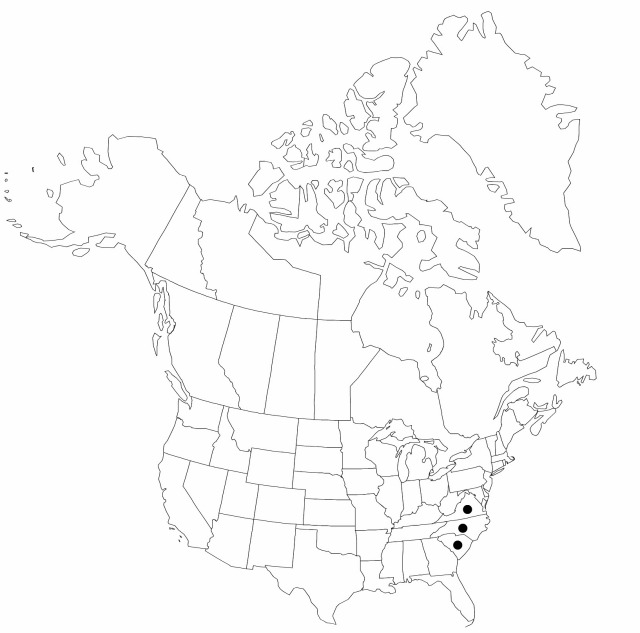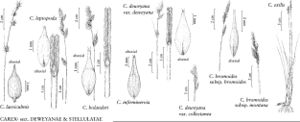familyCyperaceae
genusCarex
sectionCarex sect. Deweyanae
speciesCarex bromoides
subspeciesCarex bromoides subsp. montana
Difference between revisions of "Carex bromoides subsp. montana"
Contr. Univ. Michigan Herb. 17: 220, fig 4. 1990.
FNA>Volume Importer |
FNA>Volume Importer |
||
| Line 47: | Line 47: | ||
|publication year=1990 | |publication year=1990 | ||
|special status= | |special status= | ||
| − | |source xml=https://jpend@bitbucket.org/aafc-mbb/fna-data-curation.git/src/ | + | |source xml=https://jpend@bitbucket.org/aafc-mbb/fna-data-curation.git/src/f6b125a955440c0872999024f038d74684f65921/coarse_grained_fna_xml/V23/V23_578.xml |
|genus=Carex | |genus=Carex | ||
|section=Carex sect. Deweyanae | |section=Carex sect. Deweyanae | ||
Revision as of 19:09, 24 September 2019
Plants densely cespitose. Rhizomes short, internodes 0.2–1(–8.5) mm. Culms 1–1.6 mm wide. Widest leaf blades 2.8–4.4 mm wide. Longest inflorescences 24–44(–53) mm. Perigynium beak 0.36–0.48 times as long as perigynium. 2n = 60, 62.
Phenology: Fruiting spring.
Habitat: Mountain streamsides, seeps in deciduous forests, rarely mountain bogs
Elevation: (400–)800–1400 m
Distribution

N.C., S.C., Va.
Discussion
Carex bromoides subsp. montana is endemic to the southeastern portion of the Blue Ridge Physiographic Province.
Selected References
None.
Lower Taxa
None.
